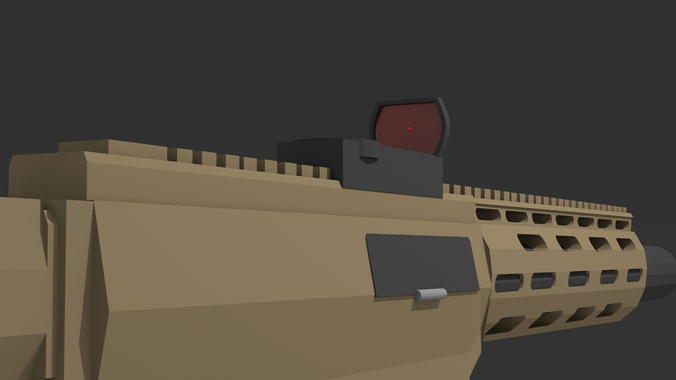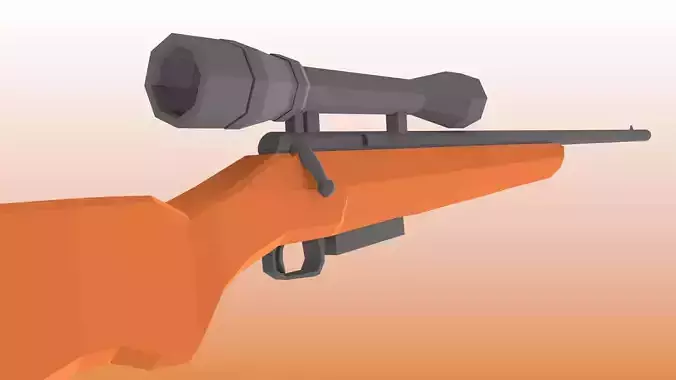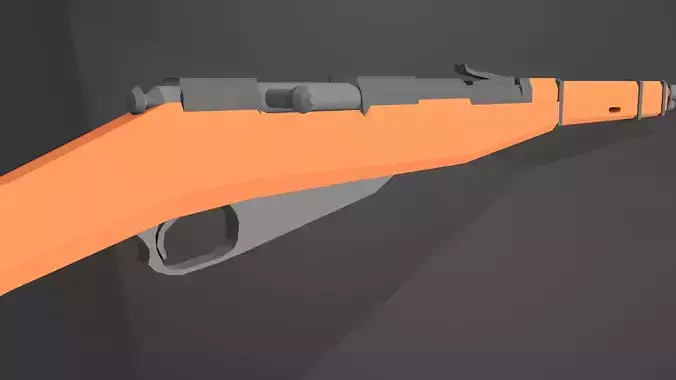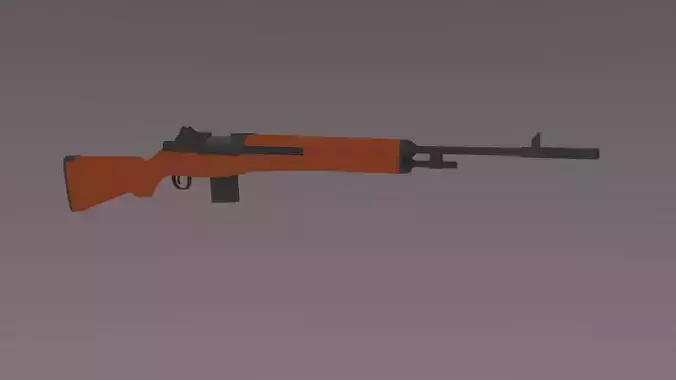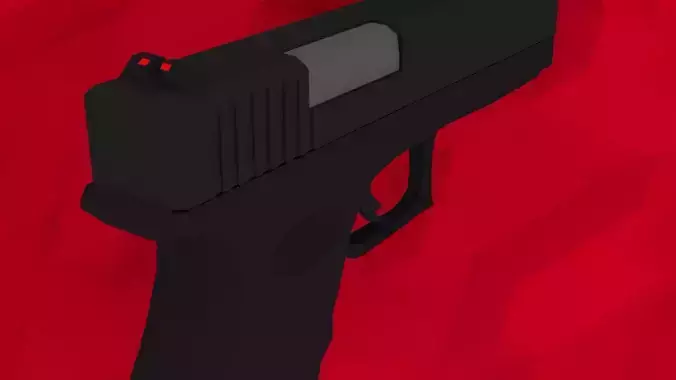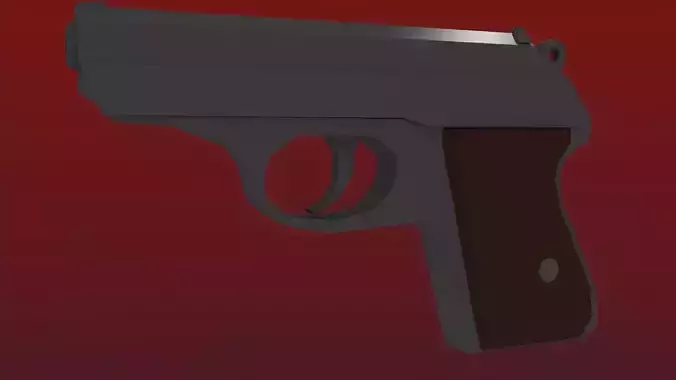1/16
3D MODELS IN THIS COLLECTION
This bundle originally costs 72$ if bought individuallyIncludes a total of 13 weapons.5 Sniper/DMR and bolt and lever action rifles2 Pistols1 Revolver1 Shotgun 2 Smg'sAmmo for all the weapons and a Knife
Some information about the Sawed off Shotgun: A sawed-off shotgun (US, CAN) also called a sawn-off shotgun (UK, IRL, AU, NZ) and a short-barreled shotgun (SBS) (U.S. legislative terminology), is a type of shotgun with a shorter gun barrel—typically under 18 inches—and often a shortened or absent stock. Despite the colloquial term, barrels do not, strictly speaking, have to be shortened with a saw. Barrels can be manufactured at shorter lengths as an alternative to traditional, longer barrels. This makes them easier to transport due to their smaller profile and lighter weight. The design also makes the weapon easy to maneuver in cramped spaces, a feature sought by military close quarters combat units, law enforcement SWAT team users, and home defense purposes. As a result of the shorter barrel length, any sawed-off shotgun with a magazine tube will have its capacity reduced.
Information about the PPSH-41:The PPSh-41 (pistolet-pulemyot Shpagina; Russian: Пистолет-пулемёт Шпагина; Shpagin machine pistol); is a Soviet submachine gun designed by Georgy Shpagin as a cheap, reliable, and simplified alternative to the PPD-40. Common nicknames are pe-pe-sha (Russian: ППШ) from its three-letter prefix and papasha (Russian: папаша), meaning daddy.
The PPSh is a magazine-fed selective fire submachine gun using an open bolt, blowback action. Made largely of stamped steel, it can be loaded with either a box or drum magazine and fires the 7.62×25mm Tokarev pistol round.
The PPSh saw extensive combat use during World War II and the Korean War. It was one of the major infantry weapons of the Soviet Armed Forces during World War II. Around six million PPSh-41s were manufactured. In the form of the Chinese Type 50 (licensed copy), it was still being used by the Viet Cong as late as 1970. According to the 2002 edition of the Encyclopedia of Weapons of World War II the PPSh was still in use with irregular militaries.[10]
Information on the Model 73: The gun that won the West. The Model 73 is world-renowned as “The Gun that Won the West.” Now you can own the real thing — a genuine Winchester Repeating Arms® Model 73 with an oil-finished walnut stock, classic blued steel crescent buttplate and a 20" round barrel, just like the original. If you’re the type of collector who won’t settle for second best or a copy of a copy, fill your hands with this magnificent rifle, saddle up and blaze your trail into the sunset.
Information on the M1 Garand:In the late 1930s the M1 Garand was one of the most advanced infantry rifles. However during the World War II attempts were made to improve its overall performance. Since the mid 1940s a number of experimental weapons, based on the M1 Garand were developed in the United States. Eventually these developments resulted in the M14 battle rifle. Its prototype competed against a locally-produced version of the Belgian FN FAL. Both weapons scored well during trials, but the US design was selected as a winner. The M14 was adopted in 1959 and gradually replaced the M1 Garand in the US Army, US Marine Corps, and US Navy service. Until 1964 it was a standard-issue service rifle. It was the primary infantry rifle in Vietnam.This includes a blend,obj,fbx and mtl files
Information about the Honey Badger: Both the rifle and the cartridge used were developed in close cooperation with American Special Operations units to create a suitable and effective replacement for the HK MP5 and similar close quarters combat weapon systems. The rifle is designed to be very convenient for military use where M16s are issued and in common use, since many similarities would exist in the fire controls, weapon manipulation, and magazines. Despite the weapon having an integrated suppressor, it can be made even quieter by using 220 grain subsonic .300 Blackout ammunition.[1]
The Honey Badger was designed to be a combination of the quiet MP5-SD and the lethality of the M-4. Kevin Brittingham, originally the founder of AAC, wanted to make something that had the ease of use of an AR-15 but the portability of a MP5.[2]
The Honey Badger was developed with a standard M4 upper and lower receiver, a short barrel with a very short gas impingement system and fast rate of rifling twist, integrated detachable customized suppressor, and a proprietary buffer tube and collapsible stock featuring two prongs. While with the added suppressor it is 3-6 inches longer than the MP5-SD, the weight is nearly identical unloaded.
Information about the L19A1 : The Accuracy International Arctic Warfare rifle is a bolt-action sniper rifle designed and manufactured by the British company Accuracy International. It has proved popular as a civilian, police, and military rifle since its introduction in the 1980s. The rifles have some features that improve performance in very cold conditions, without impairing operation in less extreme conditions.
Arctic Warfare rifles are generally fitted with a Schmidt & Bender PM II telescopic sight with fixed or variable magnification. Variable telescopic sights can be used if the operator wants more flexibility to shoot at varying ranges, or when a wide field of view is required. Accuracy International actively promotes fitting the German-made Schmidt & Bender MILITARY MK II product line as sighting components on their rifles, which is rare for a rifle manufacturer. The German and Russian forces preferred a telescopic sight made by Zeiss[3] over Accuracy International's recommendation.
Information abouth the Scoped Winchester:Opened bolt on a Winchester Model 70. The bolt has an engine turned finish.Bolt action is a type of firearm action where the handling of cartridges into and out of the weapon's barrel chamber is operated by manually manipulating the bolt directly via a handle, which is most commonly placed on the right-hand side of the weapon (as most users are right-handed). When the handle is operated, the bolt is unlocked from the receiver and pulled back to open the breech, allowing the spent cartridge case to be extracted and ejected, the firing pin within the bolt is cocked (either on opening or closing of the bolt depending on the gun design) and engages the sear, then upon the bolt being pushed back a new cartridge (if available) is loaded into the chamber, and finally the breech is closed tight by the bolt locking against the receiver.
Bolt-action firearms (or bolt guns colloquially) are most often rifles, but there are some bolt-action variants of shotguns and a few handguns as well. Examples of this system date as far back as the early 19th century, notably in the Dreyse needle gun. From the late 19th century, all the way through both World Wars, the bolt-action rifle was the standard infantry firearm for most of the world's military forces. In modern military and law enforcement use, the bolt action has been mostly replaced by semi-automatic and selective-fire firearms, though the bolt-action design remains popular in dedicated sniper rifles due to inherently more rugged design,[citation needed] and are still very popular for civilian hunting and target shooting.
Compared to other manually operated firearm actions such as lever-action and pump-action, bolt action offers an excellent balance of strength (allowing powerful cartridge chamberings), ruggedness, reliability, and accuracy, all with lightweight and much lower cost than self-loading firearms.[citation needed] Bolt-action firearms can also be disassembled and re-assembled for maintenance and repair much faster, owing to their having fewer moving parts.[citation needed] The major disadvantage is a slightly lower rate of fire than other types of manual repeating firearms, and a far lower practical rate of fire than semi-automatic weapons, though this is not a very important factor in many types of hunting, target shooting and other precision-based shooting applications.
Information about the knife : A knife (plural knives; possibly from old Norse knifr (blade)[1]) is a tool with a cutting edge or blade attached to a handle. Mankind's first tool, knives were used at least two-and-a-half million years ago, as evidenced by the Oldowan tools.[2][3] Originally made of rock, bone, flint, and obsidian, over the centuries, in step with improvements in metallurgy or manufacture, knife blades have been made from bronze, copper, iron, steel, ceramics, and titanium. Most modern knives have either fixed or folding blades; blade patterns and styles vary by maker and country of origin.
Information about the Mosin : The 3-line rifle M1891 (Russian: трёхлинейная винтовка образца 1891 года, tryokhlineynaya vintovka obraztsa 1891 goda), colloquially known as Mosin–Nagant (Russian: винтовка Мосина, ISO 9: vintovka Mosina) is a five-shot, bolt-action, internal magazine–fed, military rifle developed from 1882 to 1891, and used by the armed forces of the Russian Empire, the Soviet Union and various other nations. It is one of the most mass-produced military bolt-action rifles in history with over 37 million units having been made since its inception in 1891, and, in spite of its age, it has been used in various conflicts around the world up to the modern day.
Information about the Glock 19 : The introduction of fourth-generation Glock pistols continued in July 2010 when the Glock 19 and Glock 23, the reduced size compact versions of the Glock 17 and Glock 22, became available for retail.[31] In late 2010, Glock continued the introduction of fourth-generation models with the Glock 26 and Glock 27 subcompact variants.The Glock 19 is known as the most balanced and comfortable sized Glock. Because of this, the Glock 19 is the most popular handgun in the USA.
The GLOCK 19 in 9 mm Luger is ideal for a versatile role thanks to its reduced dimensions when compared to the standard sized option. In addition to its use as a conventional service pistol, it is ideal for use as a backup weapon or for concealed carry purpose.
Information on the revolver : A revolver (also called a wheel gun[1][2]) is a repeating handgun that has a revolving cylinder containing multiple chambers and at least one barrel for firing. Revolvers are a subset of handguns, distinct from pistols, which are defined as handguns with an integral chamber-barrel assembly. The revolver allows the user to fire multiple rounds without reloading after ever shot, unlike older single shot firearms. After a round is fired the hammer is cocked and the next chamber in the cylinder is aligned with the barrel by the shooter either manually pulling the hammer back (single action operation) or by rearward movement of the trigger (double action operation).
Information about M1911: The M1911 also known as the Browning Pistol is a single-action, semi-automatic, magazine-fed, recoil-operated pistol chambered for the .45 ACP cartridge.[1] It served as the standard-issue sidearm for the United States Armed Forces from 1911 to 1986. It was widely used in World War I, World War II, the Korean War, and the Vietnam War as well as the Soviet–Afghan War. The pistol's formal designation as of 1940 was Automatic Pistol, Caliber .45, M1911 for the original model of 1911 or Automatic Pistol, Caliber .45, M1911A1 for the M1911A1, adopted in 1924. The designation changed to Pistol, Caliber .45, Automatic, M1911A1 in the Vietnam War era.[1]
The U.S. procured around 2.7 million M1911 and M1911A1 pistols in military contracts during its service life. The M1911 was replaced by the 9mm Beretta M9 pistol as the standard U.S. sidearm in October 1986, but due to its popularity among users, it has not been completely phased out. Modernized derivative variants of the M1911 are still in use by some units of the U.S. Army Special Forces and the U.S. Navy.
Designed by John Browning, the M1911 is the best-known of his designs to use the short recoil principle in its basic design. The pistol was widely copied, and this operating system rose to become the preeminent type of the 20th century and of nearly all modern centerfire pistols. It is popular with civilian shooters in competitive events such as USPSA, IDPA, International Practical Shooting Confederation, and Bullseye shooting. Compact variants are popular civilian concealed carry weapons in the U.S. because of the design's relatively slim width and stopping power[4] of the .45 ACP cartridge.
A set of 11 different ammo types which include:5.56x45mm7.62x39mm9mm10mm12 Gauge ShellCaliber .17Caliber .22Caliber .30-06Caliber .40Caliber .50Caliber .243
REVIEWS & COMMENTS
accuracy, and usability.



















